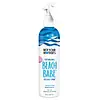What's inside
What's inside
 Key Ingredients
Key Ingredients

 Benefits
Benefits

 Concerns
Concerns

 Ingredients Side-by-side
Ingredients Side-by-side

Water
Skin ConditioningCyclopentasiloxane
EmollientCetearyl Alcohol
EmollientQuaternium-91
Parfum
MaskingPhenoxyethanol
PreservativeAdansonia Digitata Seed Oil
EmollientArgania Spinosa Kernel Oil
EmollientOenothera Biennis Oil
EmollientTocopheryl Acetate
AntioxidantHydrolyzed Rhodophyceae Extract
Tamarindus Indica Extract
SmoothingPanthenol
Skin ConditioningCetearamidoethyldiethonium Succinoyl Hydrolyzed Pea Protein
CleansingArginine
MaskingAspartic Acid
MaskingPCA
HumectantGlycine
BufferingAlanine
MaskingSerine
MaskingValine
MaskingIsoleucine
Skin ConditioningProline
Skin ConditioningThreonine
Sodium Hyaluronate
HumectantHistidine
HumectantBrassica Campestris/Aleurites Fordi Oil Copolymer
Skin ConditioningCetrimonium Chloride
AntimicrobialGlycerin
HumectantDipropylene Glycol
HumectantPolysilicone-29
Behentrimonium Chloride
PreservativeMyristyl Myristate
EmollientSilicone Quaternium-16
Skin ConditioningLeuconostoc/Radish Root Ferment Filtrate
AntimicrobialButylene Glycol
HumectantUndeceth-11
EmollientButyloctanol
HumectantGuar Hydroxypropyltrimonium Chloride
Skin ConditioningUndeceth-5
Emulsifying3-O-Ethyl Ascorbic Acid
Skin ConditioningSodium PCA
HumectantSodium Lactate
BufferingPhenylalanine
MaskingDisodium EDTA
Citric Acid
BufferingCitronellol
PerfumingGeraniol
PerfumingAlpha-Isomethyl Ionone
PerfumingCinnamyl Alcohol
PerfumingCitral
PerfumingLinalool
PerfumingHydroxycitronellal
PerfumingLimonene
PerfumingWater, Cyclopentasiloxane, Cetearyl Alcohol, Quaternium-91, Parfum, Phenoxyethanol, Adansonia Digitata Seed Oil, Argania Spinosa Kernel Oil, Oenothera Biennis Oil, Tocopheryl Acetate, Hydrolyzed Rhodophyceae Extract, Tamarindus Indica Extract, Panthenol, Cetearamidoethyldiethonium Succinoyl Hydrolyzed Pea Protein, Arginine, Aspartic Acid, PCA, Glycine, Alanine, Serine, Valine, Isoleucine, Proline, Threonine, Sodium Hyaluronate, Histidine, Brassica Campestris/Aleurites Fordi Oil Copolymer, Cetrimonium Chloride, Glycerin, Dipropylene Glycol, Polysilicone-29, Behentrimonium Chloride, Myristyl Myristate, Silicone Quaternium-16, Leuconostoc/Radish Root Ferment Filtrate, Butylene Glycol, Undeceth-11, Butyloctanol, Guar Hydroxypropyltrimonium Chloride, Undeceth-5, 3-O-Ethyl Ascorbic Acid, Sodium PCA, Sodium Lactate, Phenylalanine, Disodium EDTA, Citric Acid, Citronellol, Geraniol, Alpha-Isomethyl Ionone, Cinnamyl Alcohol, Citral, Linalool, Hydroxycitronellal, Limonene
 Reviews
Reviews

Ingredients Explained
These ingredients are found in both products.
Ingredients higher up in an ingredient list are typically present in a larger amount.
Butylene Glycol (or BG) is used within cosmetic products for a few different reasons:
Overall, Butylene Glycol is a safe and well-rounded ingredient that works well with other ingredients.
Though this ingredient works well with most skin types, some people with sensitive skin may experience a reaction such as allergic rashes, closed comedones, or itchiness.
Learn more about Butylene GlycolCitric Acid is an alpha hydroxy acid (AHA) naturally found in citrus fruits like oranges, lemons, and limes.
Like other AHAs, citric acid can exfoliate skin by breaking down the bonds that hold dead skin cells together. This helps reveal smoother and brighter skin underneath.
However, this exfoliating effect only happens at high concentrations (20%) which can be hard to find in cosmetic products.
Due to this, citric acid is usually included in small amounts as a pH adjuster. This helps keep products slightly more acidic and compatible with skin's natural pH.
In skincare formulas, citric acid can:
While it can provide some skin benefits, research shows lactic acid and glycolic acid are generally more effective and less irritating exfoliants.
Most citric acid used in skincare today is made by fermenting sugars (usually from molasses). This synthetic version is identical to the natural citrus form but easier to stabilize and use in formulations.
Read more about some other popular AHA's here:
Learn more about Citric AcidParfum is a catch-all term for an ingredient or more that is used to give a scent to products.
Also called "fragrance", this ingredient can be a blend of hundreds of chemicals or plant oils. This means every product with "fragrance" or "parfum" in the ingredients list is a different mixture.
For instance, Habanolide is a proprietary trade name for a specific aroma chemical. When used as a fragrance ingredient in cosmetics, most aroma chemicals fall under the broad labeling category of “FRAGRANCE” or “PARFUM” according to EU and US regulations.
The term 'parfum' or 'fragrance' is not regulated in many countries. In many cases, it is up to the brand to define this term.
For instance, many brands choose to label themselves as "fragrance-free" because they are not using synthetic fragrances. However, their products may still contain ingredients such as essential oils that are considered a fragrance by INCI standards.
One example is Calendula flower extract. Calendula is an essential oil that still imparts a scent or 'fragrance'.
Depending on the blend, the ingredients in the mixture can cause allergies and sensitivities on the skin. Some ingredients that are known EU allergens include linalool and citronellol.
Parfum can also be used to mask or cover an unpleasant scent.
The bottom line is: not all fragrances/parfum/ingredients are created equally. If you are worried about fragrances, we recommend taking a closer look at an ingredient. And of course, we always recommend speaking with a professional.
Learn more about ParfumPhenoxyethanol is a preservative that has germicide, antimicrobial, and aromatic properties. Studies show that phenoxyethanol can prevent microbial growth. By itself, it has a scent that is similar to that of a rose.
It's often used in formulations along with Caprylyl Glycol to preserve the shelf life of products.
Water. It's the most common cosmetic ingredient of all. You'll usually see it at the top of ingredient lists, meaning that it makes up the largest part of the product.
So why is it so popular? Water most often acts as a solvent - this means that it helps dissolve other ingredients into the formulation.
You'll also recognize water as that liquid we all need to stay alive. If you see this, drink a glass of water. Stay hydrated!
Learn more about Water